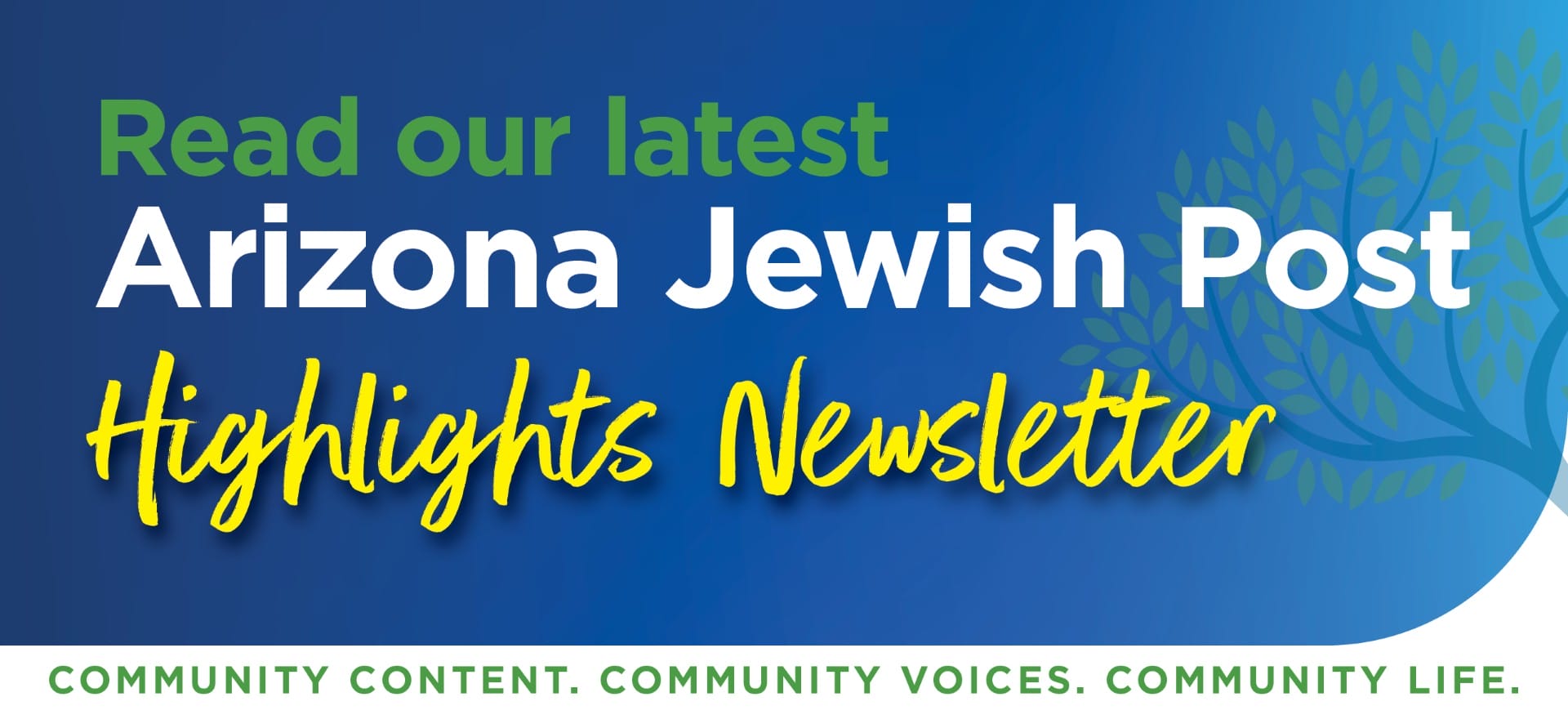
Growing up in Los Angeles, Lev Metz preferred hands-on activities such as building the family sukkah to sitting in synagogue. Always a good student, he came to appreciate traditional text study alongside experiential education. He earned master’s degrees in Jewish education and Jewish communal service from Hebrew Union College-Jewish Institute of Religion in LA.
Now, as a teacher at Tucson Hebrew Academy, father, and community volunteer, he likes to combine teaching texts with hands-on activities, especially gardening.
“Gardening is a way of praying with our bodies,” Metz told participants in “Soil & Soul: Gardening as a Jewish and Zionist Spiritual Experience,” an adult education class held at the Tucson Jewish Community Center’s Shay-Shay Garden on April 28.
The Shay-Shay Garden is a collaboration between the Tucson J and Community Gardens of Tucson.
When Metz moved to Tucson four years ago with his wife, Rabbi Sara Metz, and their three children, he faced the challenges of gardening in the Sonoran Desert, from sparse rain to the concrete-like caliche layer of the soil. To discover the best techniques for local gardening, he became a Master Gardener with the University of Arizona Pima County Cooperative Extension. He earned his certification after a semester of classroom studies and a semester as an intern, learning from other Master Gardeners.
Metz initiated a THA plot at the Shay-Shay Garden, which students from K-8 have visited. The first year, the plot was overrun with Bermuda grass, which he and his ”Green Team” middle school elective students fought by trenching with cardboard as a barrier.
This year, the THA plot delivered an abundant yield: fennel, sugar snap peas, spring onions, beets, lettuce, spinach, and herbs including cilantro, dill, and sage, plus sunflowers.
As he and his students decided what to plant, Metz focused on “what we can pick and eat straight out of the ground.” The produce was also used in THA’s middle school cooking elective.

At the “Soil and Soul” class, Metz led participants in reciting the blessing for the fruits of the earth before tasting freshly plucked fennel fronds.
He will experiment with watermelon varieties at the J this summer, hoping they’ll be ready to harvest when school resumes in August.
He noted that the plots at the J are watered with a drip irrigation system invented in Israel.
Metz, who has lived in Israel for a year three different times, remarked on the similarities between the Judean and Sonoran deserts. One difference is that Israel does not receive summer monsoon storms.
Speaking about the kibbutz, or agricultural collective, as the cornerstone of Israeli society, Metz said he sees Jews as “an indigenous people, connected to the land through culture, language, and food.”
He noted that many of the early kibbutzniks became important political and military leaders, including Israel’s first prime minister, David Ben-Gurion, who called on Israelis to “make the desert bloom.”
Yuval Malka, Tucson’s community shlicha (Israeli emissary), attended the class and agreed that what was considered “the ideal of the sabra” (native Israeli) in Israel’s early years was a person of the land, in contrast with the image of the European Jewish scholar.
Malka grew up on a moshav, another type of agricultural community, and recalled that a good portion of her schooldays were spent outdoors, developing a strong connection to the land.
For the textual portion of “Soil and Soul,” participants read aloud from two distinctly contradictory creation stories in Genesis.
In the first version, God creates all the plants and creatures of the land, sea, and skies before saying, “Let us make humanity in our image.” The passage continues, “male and female God created them.” From this, Metz said, comes the idea of respecting ourselves and others, because we are all created in God’s image. In this version of creation, God gives humans mastery of the earth and all it contains.
In the second version, which immediately follows the first, God forms man from the dust of earth, then creates the garden of Eden, placing man there “to work it and guard it.” God then forms all the beasts of earth and sky, but seeing “no fitting helper” for man, fashions woman from one of the man’s ribs. Genesis continues with the serpent who tempts Eve to eat from the Tree of Knowledge, leading to Adam and Eve’s expulsion from the Garden of Eden.

God’s instructions from the first version, to “fill the earth and master it,” have become the dominant perspective, Metz said, while “work it and guard it” gives us the idea of labor as a prayer service to God.
For Metz, these contradictions encapsulate the duality of Judaism, which is both Earth-based and intellectual/spiritual.
Metz’s gardening efforts are not limited to the plot at the J. With the support of various stakeholders, he started a container garden at THA.
Metz also helped revive Congregation Anshei Israel’s preschool gardens. As part of his Master Gardener duties, he volunteers at a Cooperative Extension Demonstration Garden, which like the Shay-Shay garden, uses in-ground basins.
For home gardens, he prefers raised beds, which cost more initially but are easier to work, because they eliminate the need to deal with the caliche. With three raised beds at home, he harvested the last of his beets, carrots, turnips, kale, and Swiss chard in April, and was looking forward to summer’s tomatoes, squash, cucumbers, and sweet peppers.
His garden also reflects his love for the land of Israel as described in the book of Deuteronomy, with a date palm and grape vine along with fig and pomegranate trees.
His kids, he said, “appreciate the fresh produce even if they don’t want to help with the garden.”
Starting in the fall, Metz will offer three six-session “Soil and Soul” courses at the J. As part of the course, participants will help cultivate a plot in the Shay-Shay Garden.




